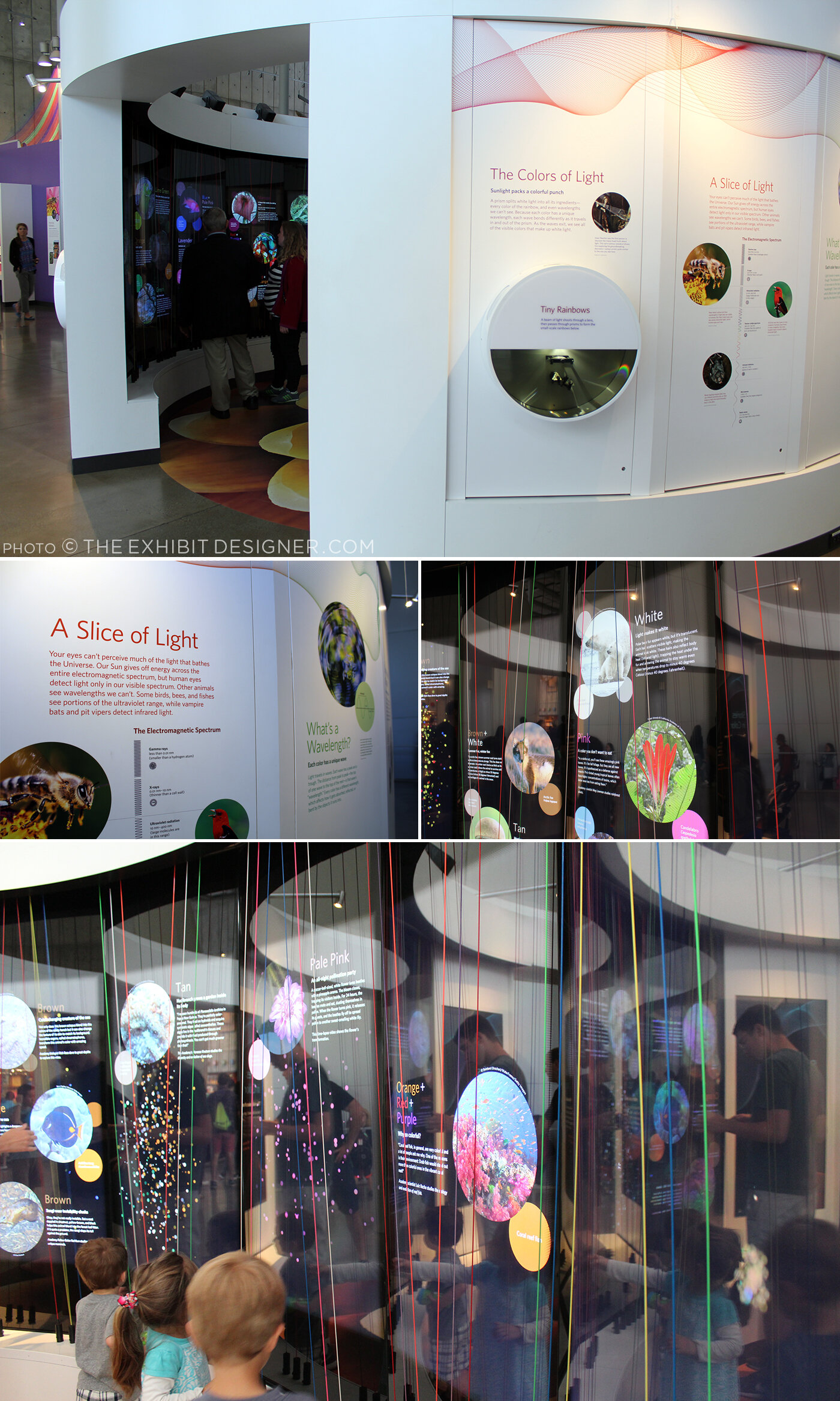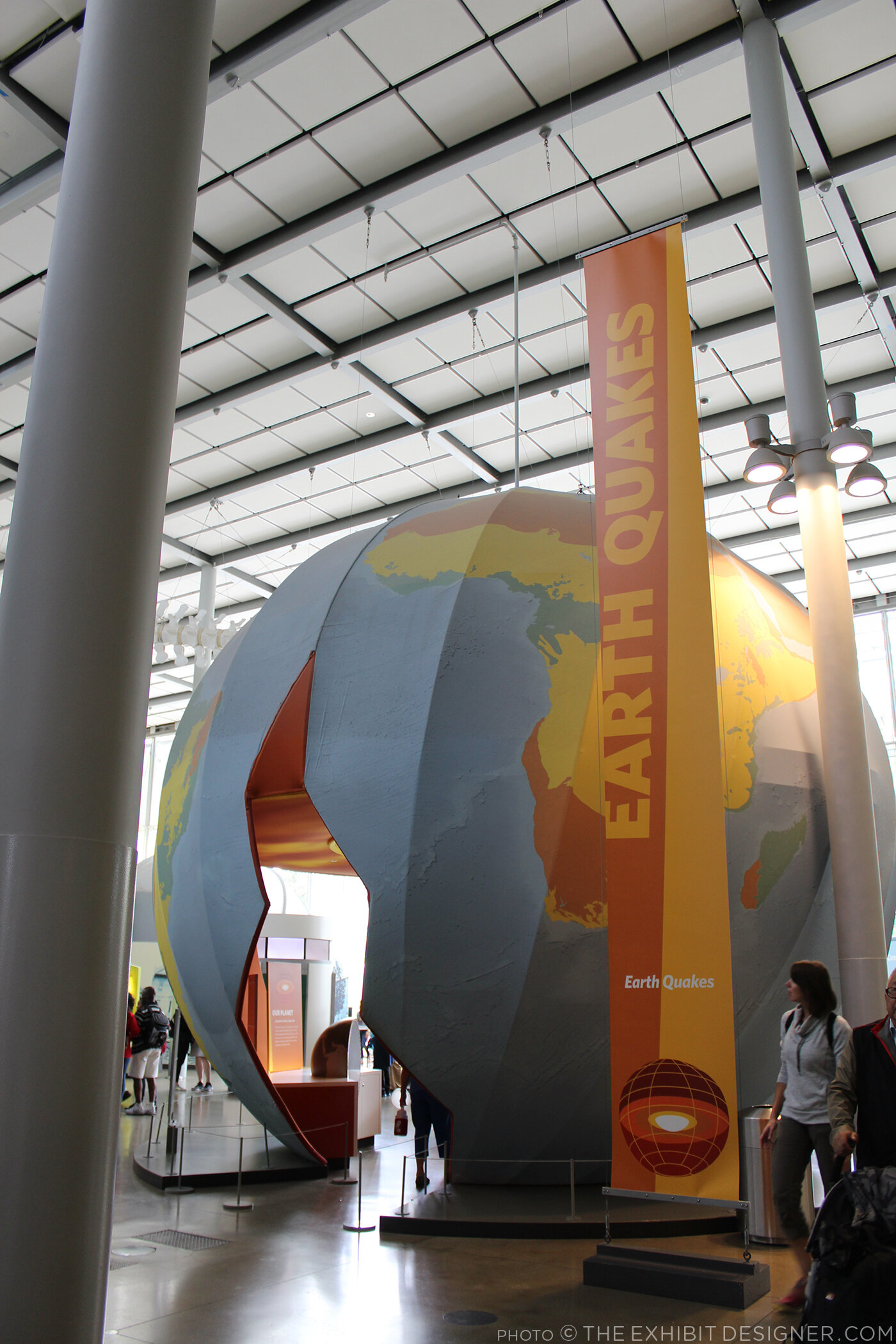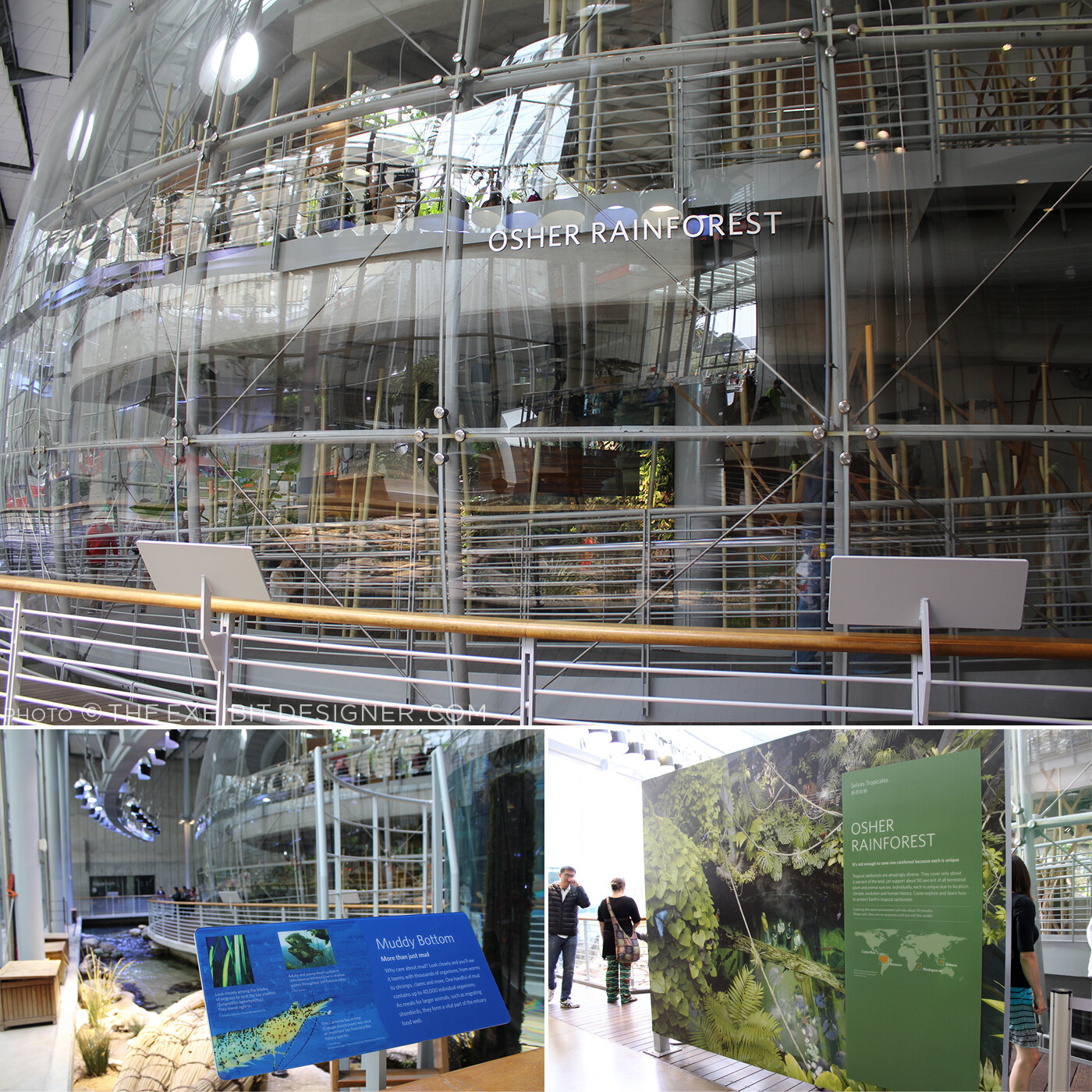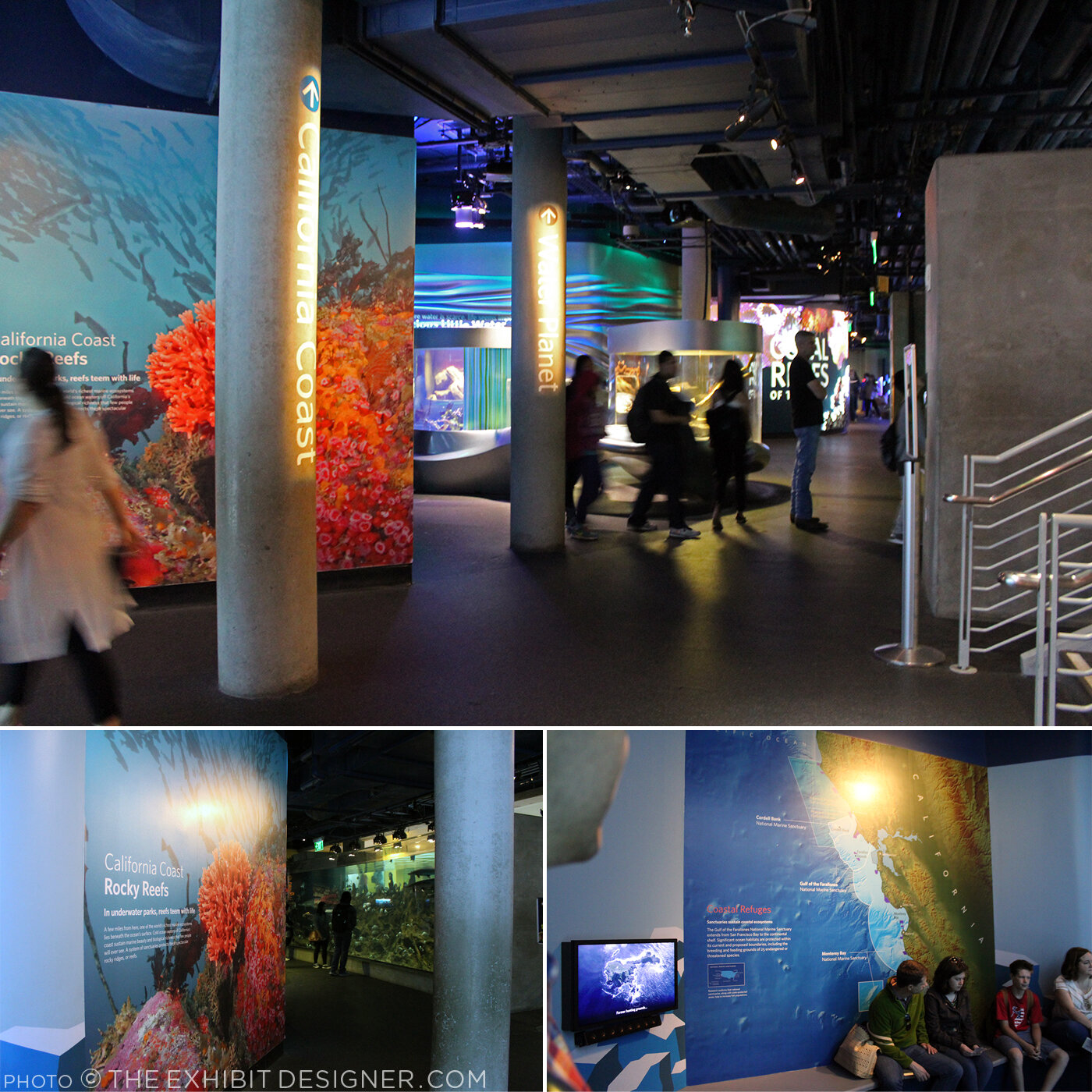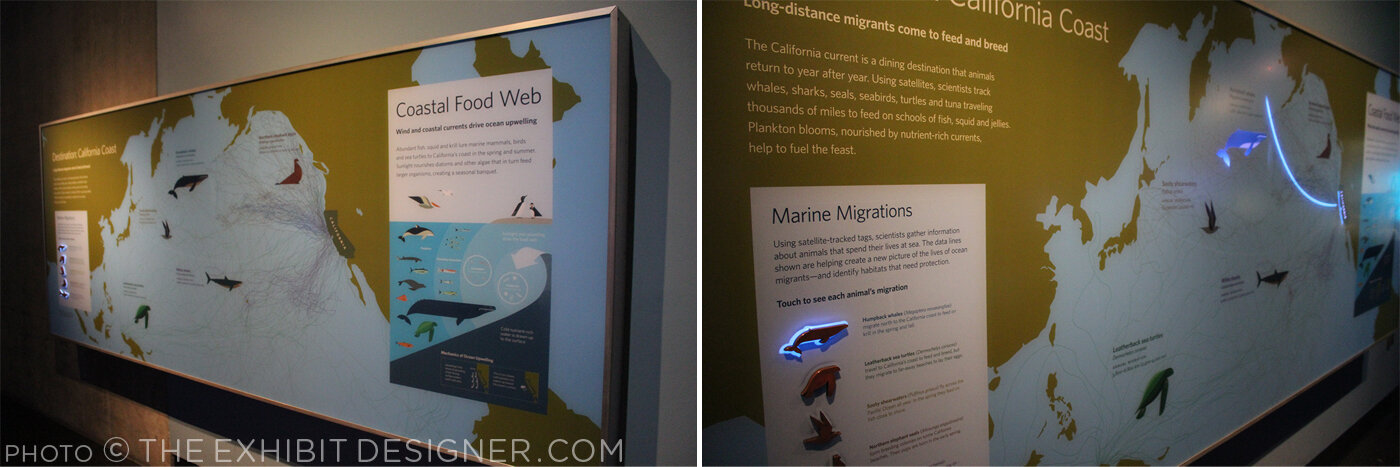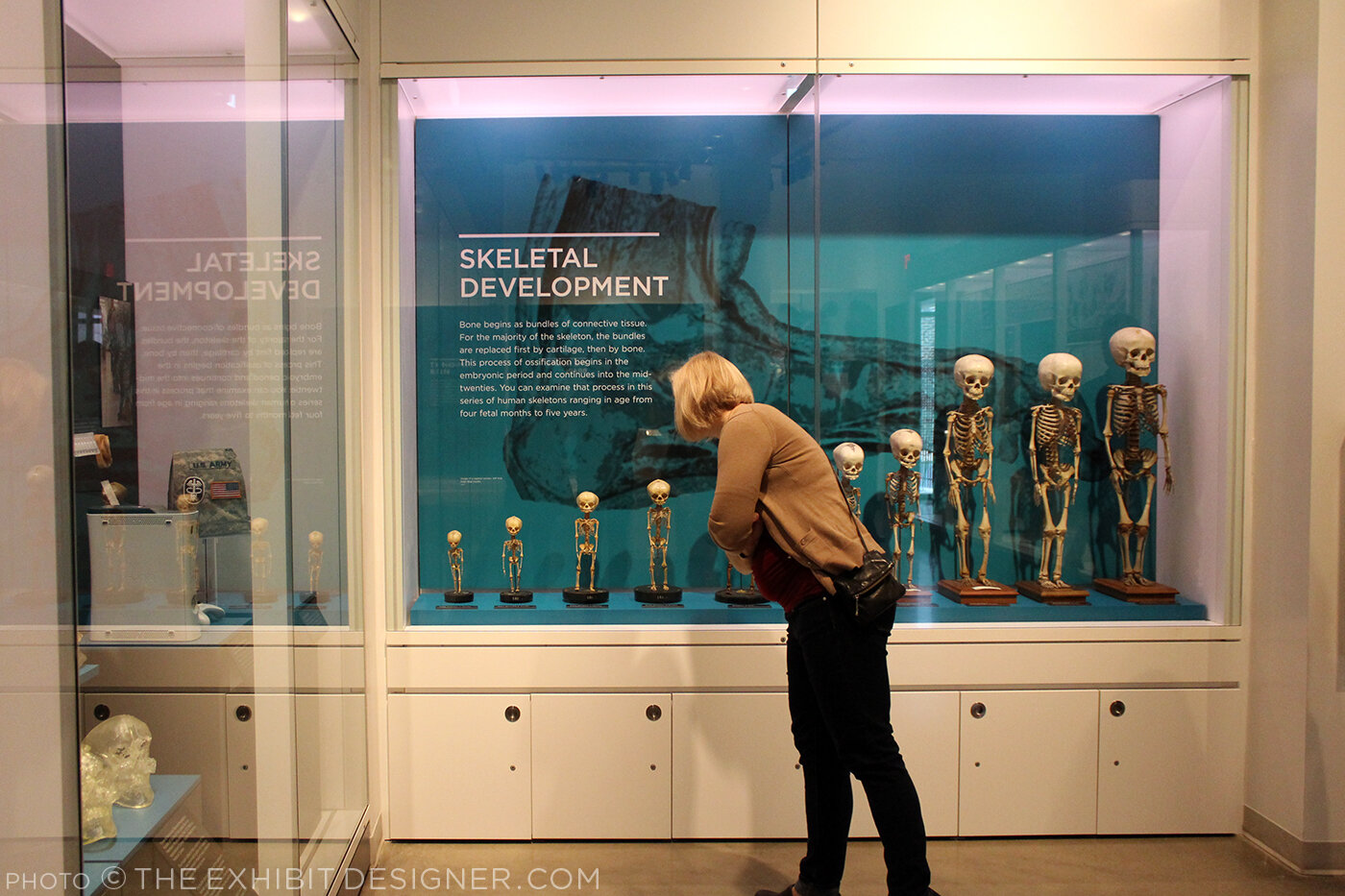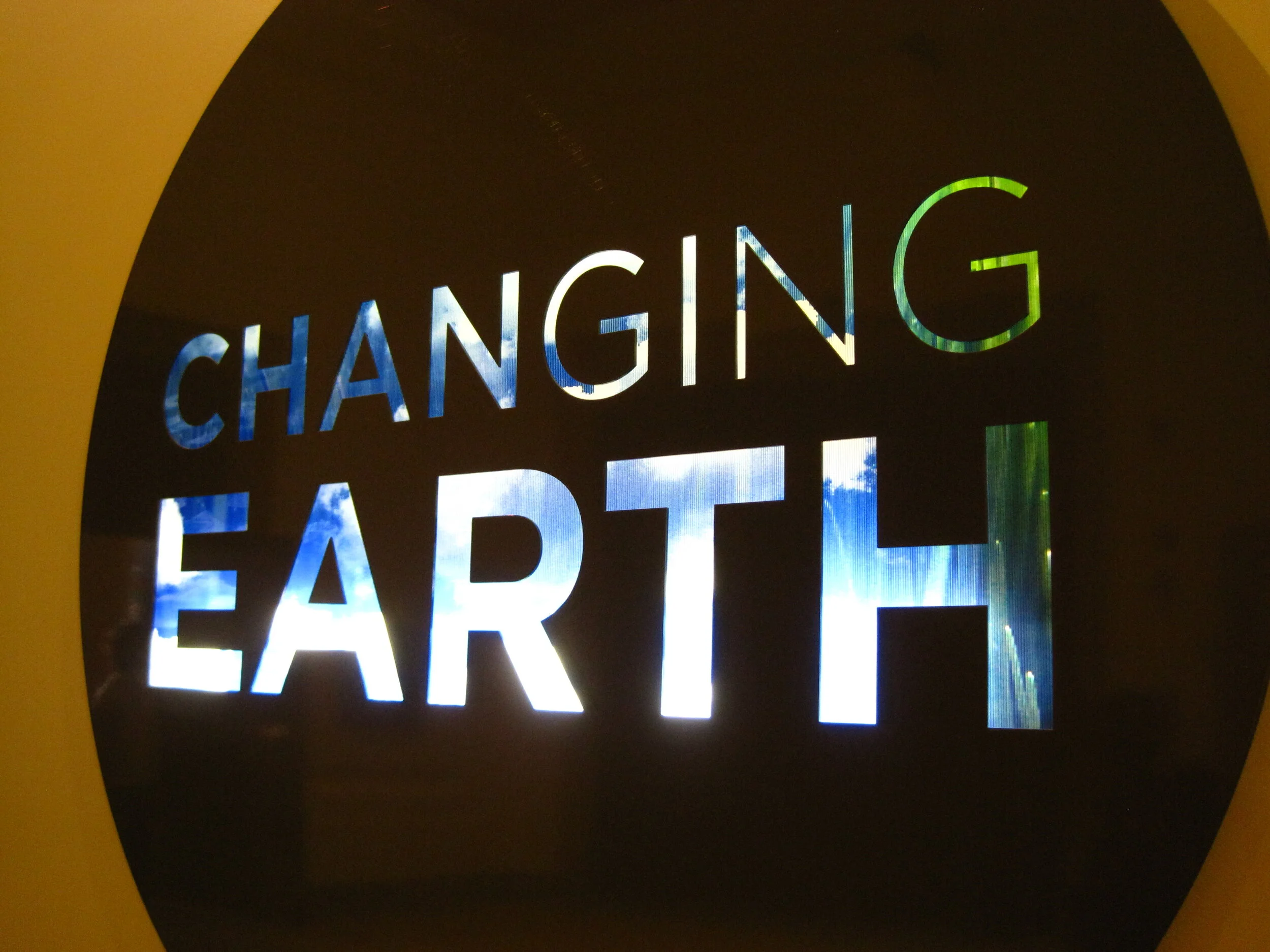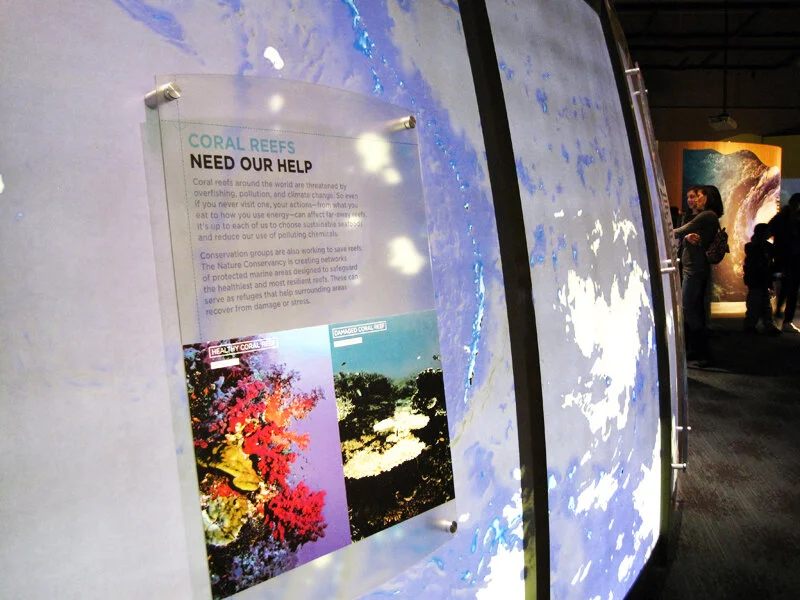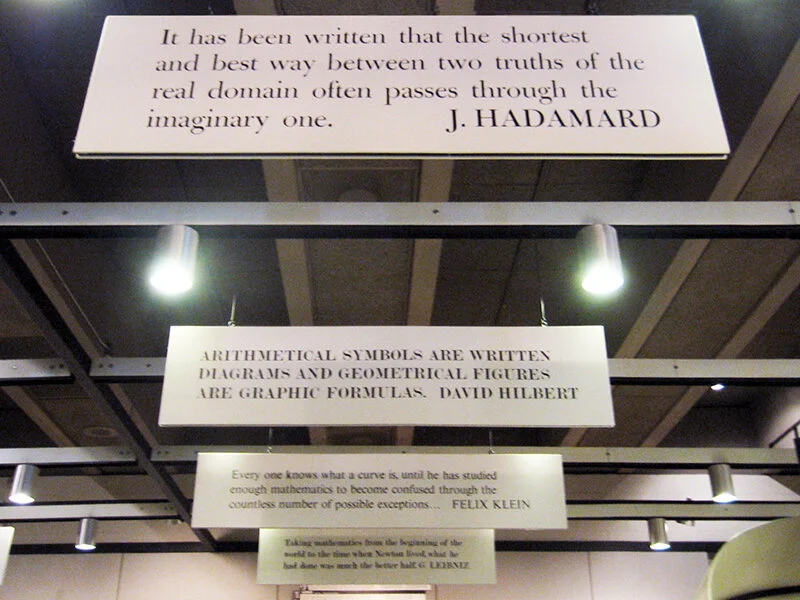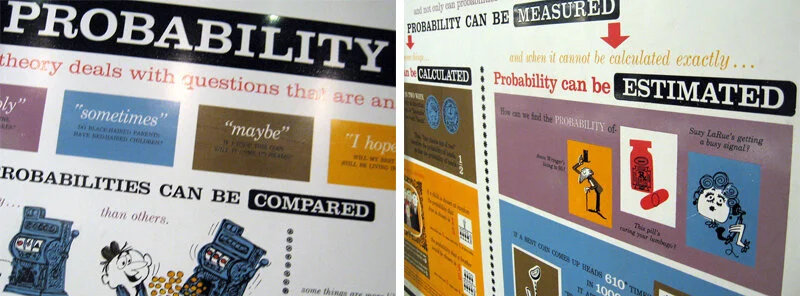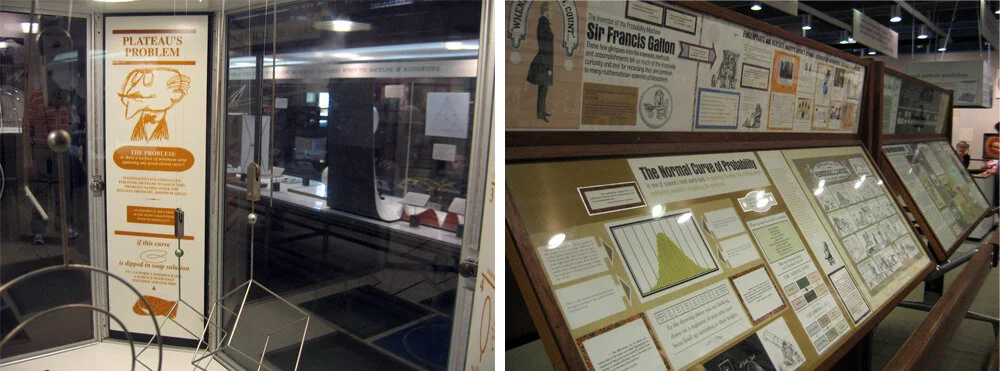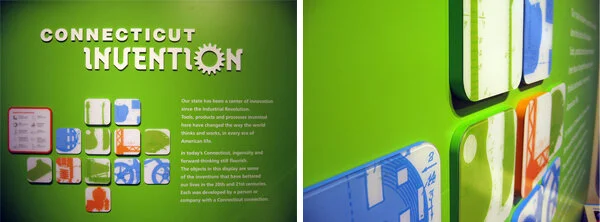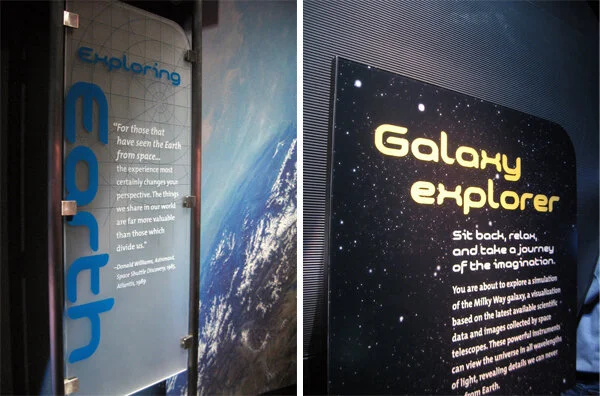DC Design Week events have wrapped. This was a good Design Week — there were many more events than in years past, with a range of design focuses — and I was able to make it to a number of them! An event of particular interest to exhibition designers was held on Wednesday, at the National Building Museum: Design Matters with Debbie Millman featuring Abbott Miller: Design for the Built Environment.
The conversation touched on exhibition design, architectural graphics, and performance design. And as a bonus, prior to the event start, the museum's newest temporary exhibition, Timber City, was open for us.
Timber City opened in September and is on view at NBM through May 2017. The two huge title signs in the museum atrium draw your eye up and point to the bay where the exhibition is located. Also impressive in its scale is the scaffolding holding up the signage.
The exhibition is not restricted to the interior gallery space. Lining the hall outside the gallery are large plinths, of staggered heights, that feature stories about buildings' timber technology. Within the window bays are views into the exhibition, and architectural models in cases. The text on the painted green walls appears to be cut vinyl.
Inside the gallery space, the exhibition is made up of large-scale, extra-thick, freestanding wood walls. (You can see the support structures below.) Graphics appear to be a mix of direct-print and cut vinyl. The large murals at either end of the gallery space are applied wallpapers.
Note for future exhibits: Laminated Strand Lumber does not take cut vinyl letters well. (above)
In the center of the gallery space are a trio of cheeky display case plinths, made of stacked wood circles. The wood walls are peppered with infographics, stylized illustrations, and green circles highlighting quick facts about timber.
Post updated in January 2021 with minor text edits. Broken links have been replaced with archived URLs, courtesy of archive.org. This post was originally published at theexhibitdesigner.com on 31 October 2016.


















